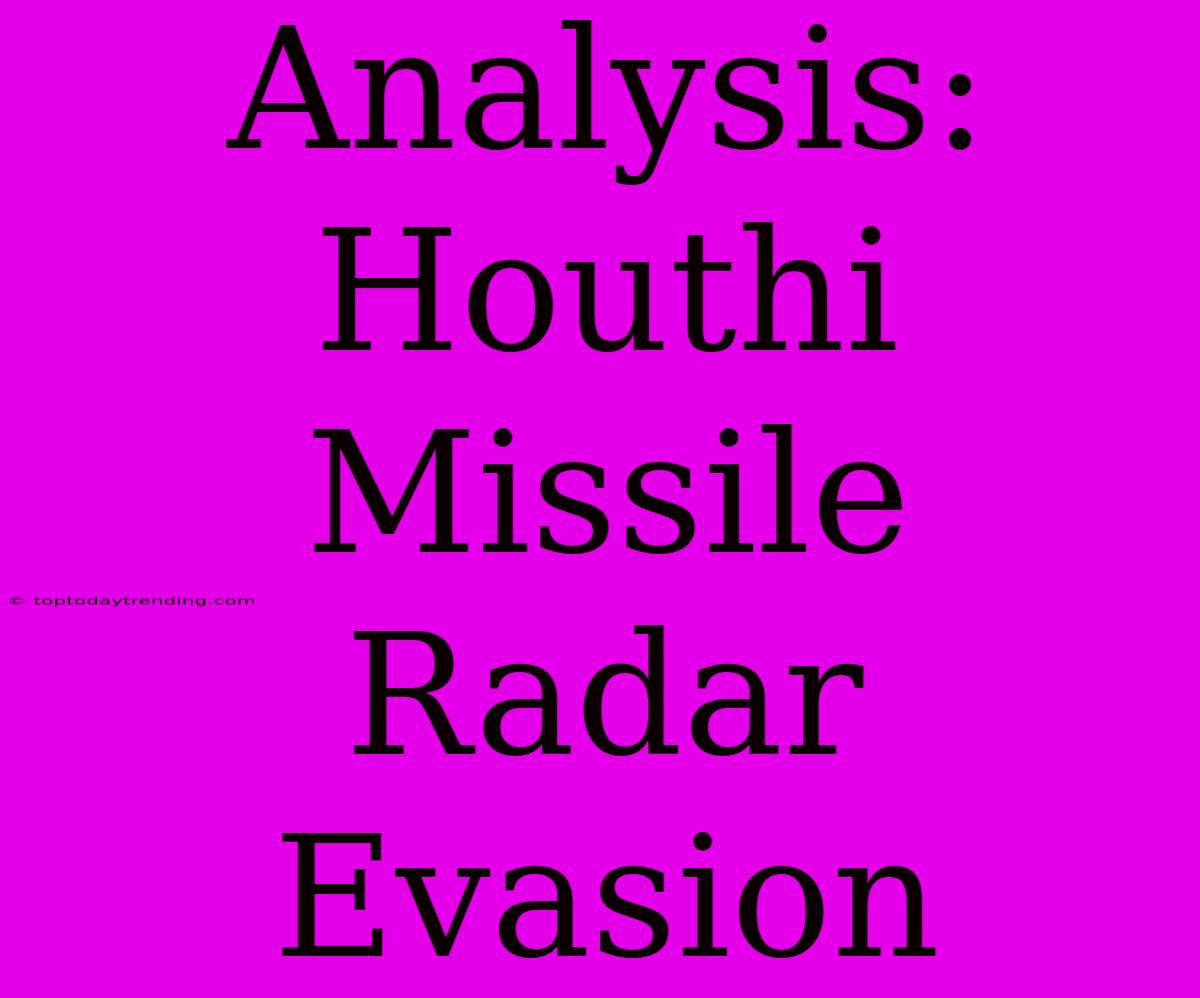Analysis: Houthi Missile Radar Evasion
The Houthis, a Yemeni rebel group, have repeatedly demonstrated their ability to target Saudi Arabia with missiles, despite Saudi Arabia's formidable air defense systems. A key factor in their success is the use of sophisticated radar evasion tactics. This article delves into the techniques employed by the Houthis to evade Saudi radar systems and highlights the implications for regional security.
Houthi Missile Capabilities
The Houthis have been able to acquire and modify a variety of ballistic missiles, including the Qiam-1, Badr-1, and Zolfaghar. These missiles are capable of reaching targets across Saudi Arabia, including key infrastructure and military bases.
Radar Evasion Techniques
The Houthis employ a combination of tactics to evade Saudi radar systems:
- Low-Altitude Flight: Flying at low altitudes reduces the time available for radar detection. This makes it harder for radars to track and intercept incoming missiles.
- Terrain Masking: The Houthis exploit the mountainous terrain of Yemen to conceal their missile launches and mask their trajectories from radar detection.
- Decoys and Electronic Countermeasures: They deploy decoys to confuse radar systems and utilize electronic countermeasures to disrupt radar signals.
- Stealth Technology: Though not confirmed, it is believed the Houthis may be using stealth technology on some missiles, reducing their radar signature and increasing their survivability.
Houthi Successes and the Implications
The Houthis have successfully struck several targets in Saudi Arabia, including oil installations, military bases, and civilian areas. Their ability to evade radar defenses has raised serious concerns about Saudi Arabia's vulnerability and the effectiveness of its advanced air defense systems.
Future Developments
The Houthis' success in evading Saudi radar systems suggests that the threat to regional security remains significant. The situation underscores the need for constant innovation and adaptation in defense technology.
Possible Countermeasures
Saudi Arabia is likely to respond to the Houthi missile threat with a variety of countermeasures, including:
- Upgrading Air Defense Systems: Modernizing radar systems and deploying advanced counter-battery systems to track and intercept missiles.
- Increased Intelligence Sharing: Sharing intelligence with allies to detect and prevent Houthi missile launches.
- Cyber Warfare: Using cyberattacks to disrupt Houthi communications and missile guidance systems.
Conclusion
The Houthi's ability to evade Saudi radar systems represents a significant development in regional security. Their successes highlight the need for continued investment in advanced air defense systems and the development of counter-missile technologies. As the conflict in Yemen continues, the use of sophisticated radar evasion tactics by the Houthis will likely become increasingly important in determining the future of the war.

